Polariscope
Overview: Light waves are electro magnetic that travel in two directions. Polarization refers to the direction that electromagnetic waves are traveling in. Linear polarization waves move in straight lines.
Supplies: Polariscope, polarizer sheets, clear plastic objects (protractor, plastic cups, etc.), clear tape
Objectives: What is polarization? How do polarized sunglasses work?
Setup:
- Plug in and turn on the light source
- Place objects one at a time between the lighted polarizer and the rotating polarizer
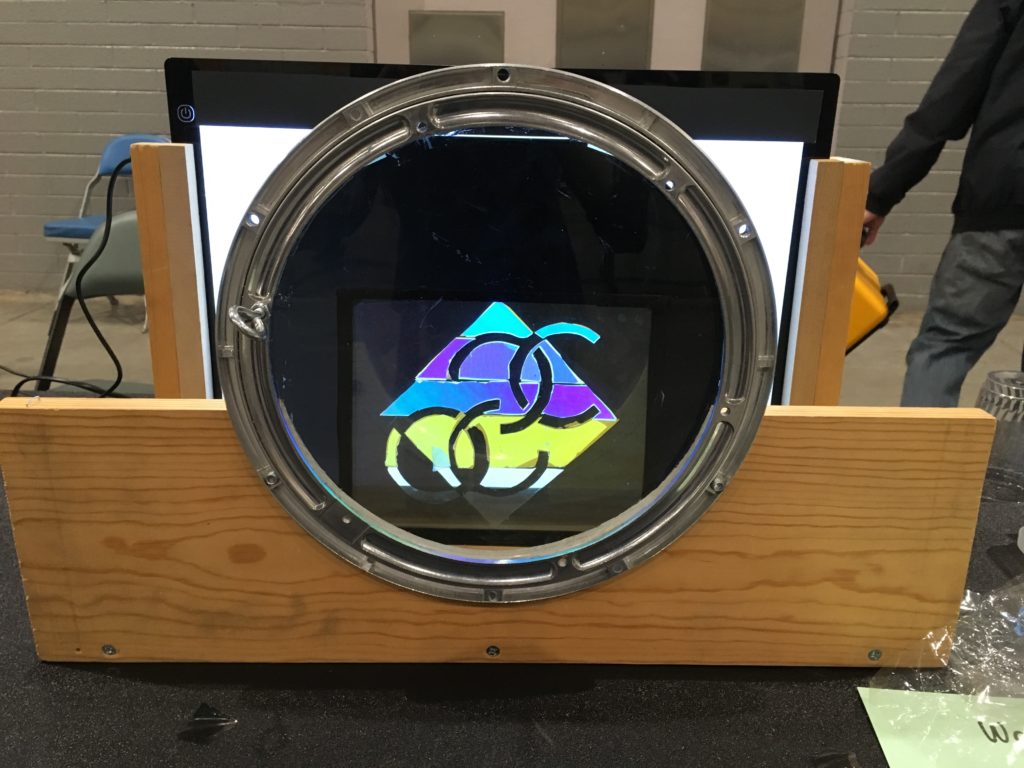
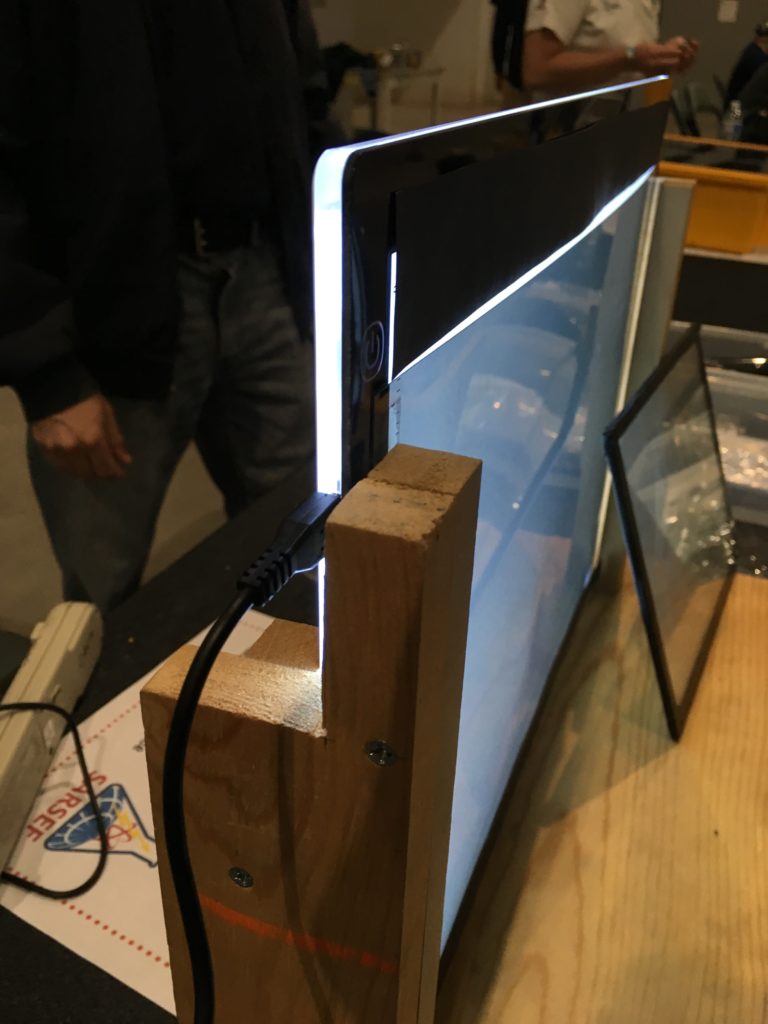
How to run the demo:
- Rotate the polarizers with respect to each other, and observe the pattern of light and dark.
- When the polarizers are “crossed” (it appears dark when looking through)
- Place objects in between the polarizers and check out the colors!
- Rotate the front polarizer and watch the colors change.
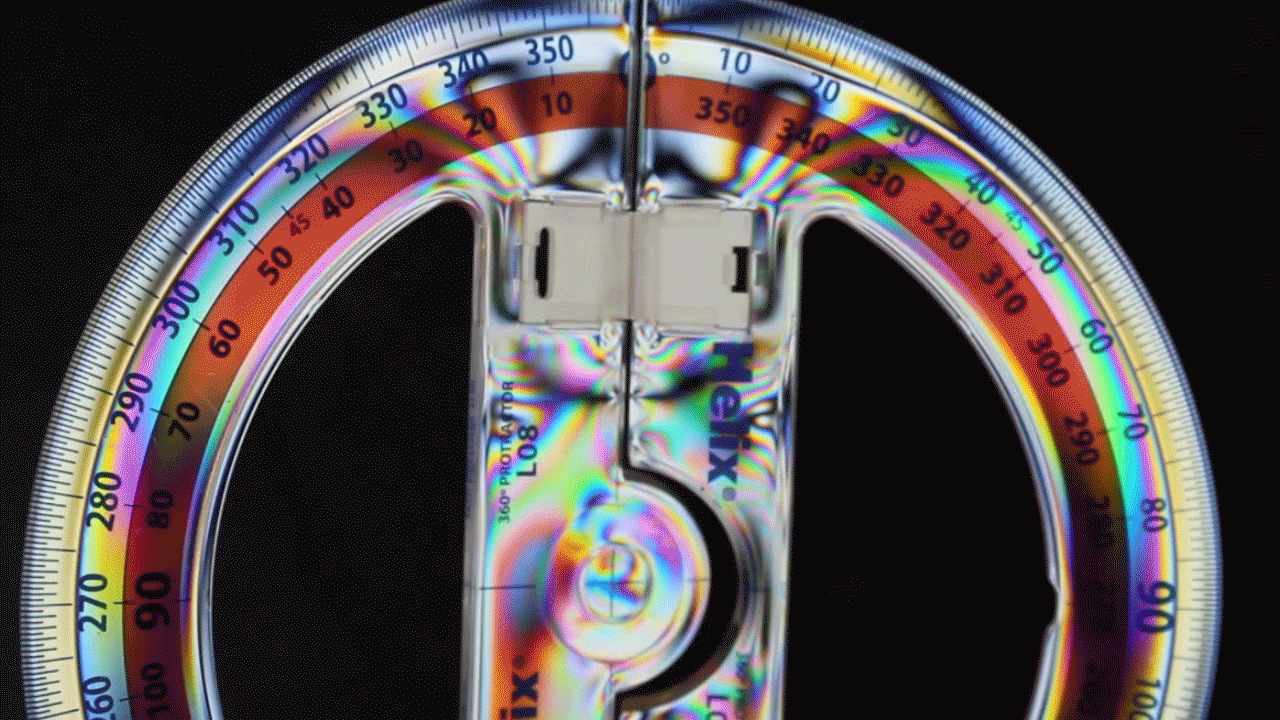
What’s Happening?
Light is a traveling electromagnetic wave. These electric and magnetic fields travel through space at the speed of light. The orientation of the electric field determines its polarization. Light can be unpolarized, having no preferred orientation of the electric field, linearly polarized where the electric field traces out a line, or circularly polarized, where the electric field travels in a circle over time.
Linear polarizers act as “gates”, blocking different forms of polarization. Think of these as fences; if light is polarized along the direction in the gaps, the light will pass through, but if it is in the opposite direction it will be blocked.
Some objects are birefringent, meaning the refractive index of the material changes depending on the polarization. Some crystals are naturally birefringent due to their crystal structure. The colors from the plastic objects come from stress birefringence, typically from when they were made using injection molding. The colors that we see from the tape add various layers of thickness, which produces thin film interference.
Polarizing sunglasses reduce glare from things like water, snow, or the road. Many LCD displays are polarized, so some electronics cannot be seen clearly when wearing polarized sunglasses. 3D movies use circularly polarized lenses rather than linearly polarized sheets like this polariscope because the audience can tilt their heads side-to-side and still see the 3D image.
Try this:
- Rotate one polarizer in a full circle and count the number of times that it looks dark. Now place another polarizer between the two polarizers, rotate in a full circle, and count the times it is dark. Are these different?
- Make your own mini-polariscope by taking two small pieces of polarizer and holding them up to a light. You can add tape to one polarizer and check out how the colors change as you rotate!
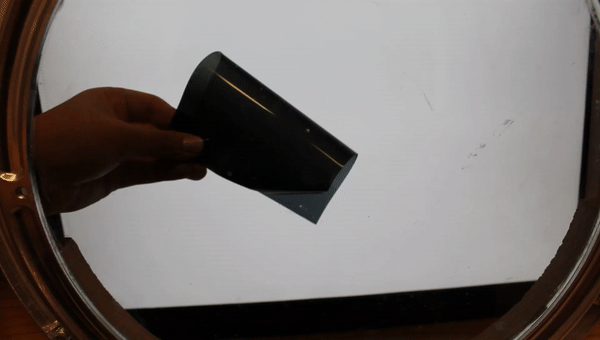

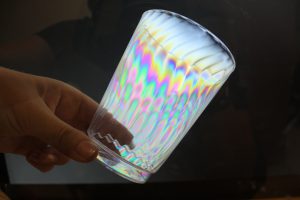
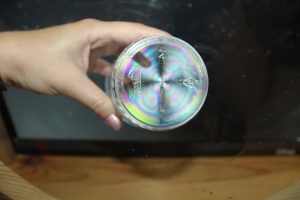
Troubleshooting:
- The light source changes brightness as you press the power button, so hold down until it gets to it’s maximum brightness.
Learn more: (external links)

